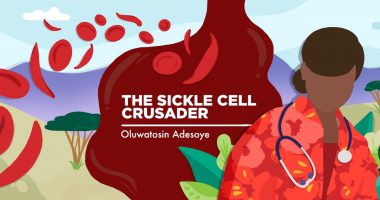Genetic Differences Seen to Mirror Sickle Cell Severity in African Study

Genetic analyses of African patients identified several genes and biological pathways that are associated with disease severity and longevity, and that might serve as new therapeutic targets in sickle cell disease (SCD).
The study, “Genetic modifiers of long‐term survival in sickle cell anemia,” was published in the journal Clinical and Translational Medicine.
SCD can vary widely in terms of severity, and in the frequency of vaso‐occlusive crises and stroke. Although both genetic and non-genetic factors are known to play a role in SCD, those influencing its severity across different patient populations remain largely unknown.
Investigators from the University of Cape Town, in South Africa, examined the protein-coding portions of genes — called the exome — of 105 African patients recruited in Cameroon. Specifically, the team looked at genes that affect SCD severity.
The African focus of this study was significant, as SCD — of which sickle cell anemia (SCA) is the most severe form — is particularly prevalent in sub-Saharan Africa, despite most SCD research occurring in Europe and the U.S.
“Among the 300,000 babies that are born with the condition every year, 80% are in sub-Saharan Africa,” Ambroise Wonkam, the study’s principal investigator and director of Genetic Medicine of African Populations at the university, said in a news story. “It is, in essence, an African disease.”
Wonkam and his colleagues focused on two distinct clinical SCA groups, 26 so-called “long survivors” — people older than 40, with a median age of 44 — and 23 patients who had experienced a stroke, considered a proxy of disease severity, with a median age of 20.5.
These two groups were compared with a control group of 56 clinically stable patients, with a median age of 16.5 and no history of cerebrovascular disease such as stroke.
A prior study set a general life expectancy of 43 years old for people with SCA, making a “long survivor” group of interest. And in sub-Saharan Africa, up to 90% of children with sickle cell disease “are believed to die by [age] 5,” the researchers wrote.
“Why is it that these people — who live in an environment that is not favourable in terms of healthcare access, and stressors including high temperatures, malaria and other infections — manage to survive while others die at a much younger age?,” Wonkam said. “Our hypothesis is that these long survivors living with SCA may be protected by some genetic factors.”
Significant differences in 49 genes among the three groups. The “long survivor” group showed an abnormal amount of mutations in 17 genes, compared to 19 genes in the stroke group, and 39 genes in the control group. Several genes showing changes overlapped across the three groups.
Genes that sparked the investigators’ interest in the “long survivor” group included CLCN6 and OGHDL. Rare and harmful variants of CLCN6 have been associated with lower blood pressure, but this might benefit people with sickle cell.
“Given that increased blood pressure is a major risk factor for stroke in SCD, this suggests that SCD patients with CLCN6 mutations live longer due to a reduced risk of stroke,” the researchers wrote.
In turn, O6HDL is important for the metabolism of the amino acids arginine and glutamine.
Wonkam noted that glutamine is approved to treat SCD by the U.S. Food and Drug Administration, marketed as Endari (L-glutamine) by Emmaus Life Sciences.
“This means that some of the patients actually make glutamine available to themselves naturally,” Wonkam said. “In other words, they are naturally able to treat themselves.”
Overall, several genes that showed changes are involved in blood coagulation and in the complement system, a set of over 30 proteins that form part of the body’s immune defenses. While mutations affecting blood clotting appeared in all groups, they particularly affected the stroke group.
To Wonkam, this implies that thinning the blood of SCA patients may be worth investigating as a treatment.
To the researchers’ knowledge, the study is the first of SCD variation in Africa using an exome sequencing approach.
“This study thus makes significant contributions to present knowledge of the natural history and clinical heterogeneity of SCA in [sub-Saharan Africa], with the potential for informing the design of new therapeutics,” they wrote.
Added Wonkam: “What our study has shown is that there could be a few other routes for therapeutic manipulation that have not yet been explored.
“I believe this is probably one of the landmark findings that have been performed in Africa where most of these patients live,” he said.






